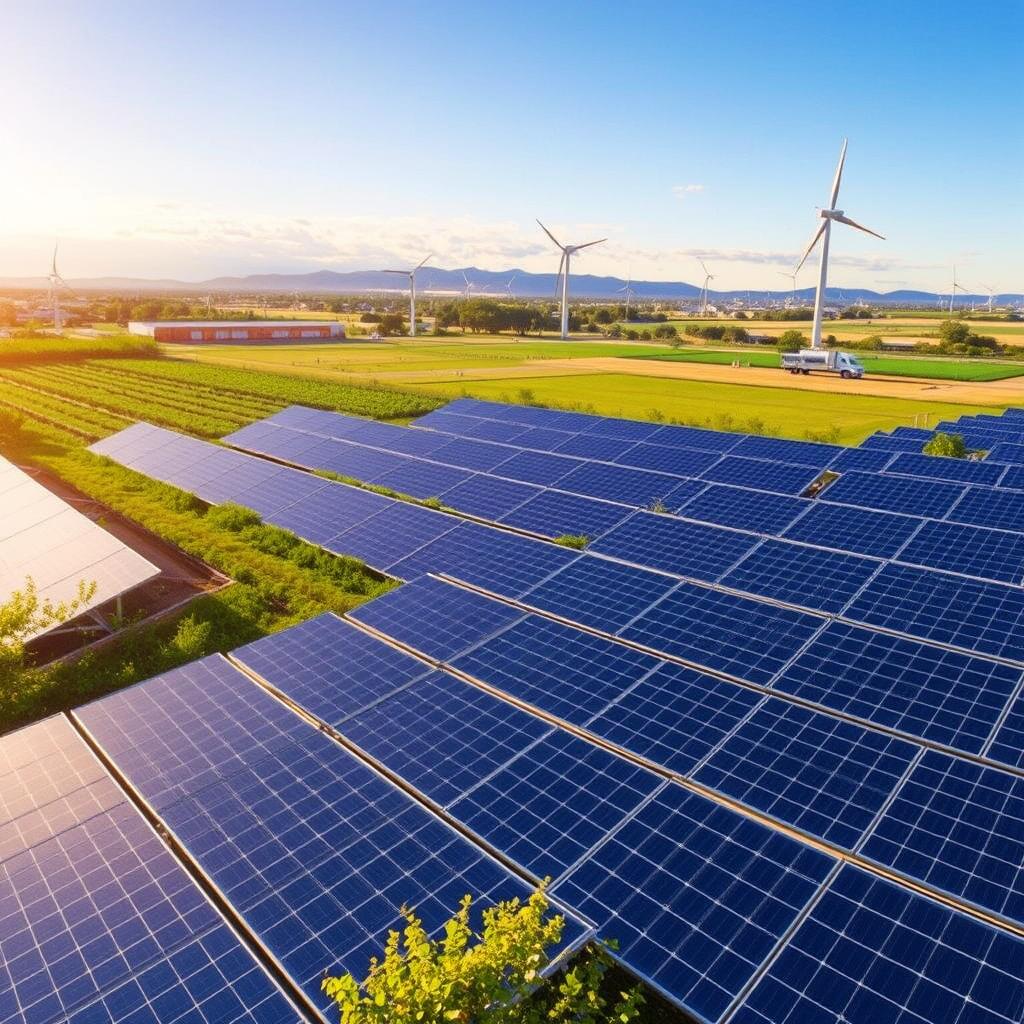Blog on RFID Technology and IoT Solutions
Blog Home
Top 5 IoT Innovations Transforming the Renewable Energy Industry
12 September 2024As the world shifts towards sustainable energy solutions, the Internet of Things (IoT) is playing a critical role in revolutionizing the renewable energy industry. IoT software are helping optimize energy production, reduce waste, and improve the efficiency of renewable systems. From real-time data monitoring to predictive maintenance, IoT is transforming how we generate, store, and distribute clean energy.
In this blog, we explore the top 5 IoT innovations that are driving the renewable energy sector towards a greener and more efficient future.
1. Smart Grids: Enhancing Energy Distribution
A smart grid is an advanced electricity network that uses IoT sensors and communication technologies to manage energy demand and supply in real time. Smart grids are crucial for integrating renewable energy sources like solar and wind into the grid, ensuring a stable and efficient power supply.
How Smart Grids Are Transforming Renewable Energy:
- Real-Time Monitoring: IoT sensors monitor energy usage patterns, providing insights into peak demand and enabling dynamic adjustments to supply.
- Energy Storage Optimization: Smart grids manage the integration of battery storage systems, optimizing when to store excess energy and when to release it into the grid.
- Demand Response: IoT-enabled grids allow utilities to respond to high demand by automatically adjusting power loads, preventing outages and minimizing energy waste.
Example:
Siemens Smart Grid Solutions: Siemens is leading the way with smart grid technology, integrating real-time data and IoT to optimize renewable energy generation and distribution across regions.
2. Predictive Maintenance for Wind and Solar Farms
One of the most impactful IoT innovations in renewable energy is predictive maintenance. IoT devices monitor equipment like wind turbines and solar panels to detect potential failures before they happen, ensuring consistent energy production.
Key Benefits:
- Reduced Downtime: IoT sensors provide continuous data on equipment performance, allowing operators to address issues before they lead to costly breakdowns.
- Extended Equipment Lifespan: By monitoring vibration, temperature, and other critical factors, IoT systems can predict when parts will need maintenance, reducing wear and tear.
- Lower Maintenance Costs: Predictive maintenance reduces the need for reactive repairs, cutting down on both labour and replacement costs.
Example:
GE Renewable Energy: GE’s wind turbines are equipped with IoT sensors that continuously collect data, enabling real-time analytics to predict maintenance needs and optimize energy production.
3. Energy Management Systems (EMS) for Smart Solar
Energy Management Systems (EMS) are IoT-enabled platforms that provide detailed insights into energy production, storage, and consumption. EMS systems are particularly effective for managing solar energy in residential and commercial settings.
How IoT-Enabled EMS Transforms Solar Energy:
- Real-Time Energy Tracking: EMS systems track solar panel performance, providing users with real-time data on energy production and identifying inefficiencies.
- Optimized Energy Storage: EMS systems integrate with battery storage solutions, ensuring that excess solar energy is stored for later use, reducing reliance on the grid.
- Demand Management: EMS helps balance energy supply and demand, ensuring that users consume energy efficiently during peak times and store energy when demand is low.
Example:
Tesla Powerwall: Tesla’s IoT-connected Powerwall works with solar panels to store excess energy and manage energy distribution efficiently, optimizing solar power usage in homes and businesses.
4. IoT-Driven Microgrids: Decentralizing Energy
Microgrids are localized grids that can operate independently from the main power grid. IoT technology is crucial in making microgrids more flexible, efficient, and scalable, particularly in regions that rely on renewable energy sources.
IoT’s Role in Microgrid Optimization:
- Decentralized Energy Control: IoT devices monitor and control energy generation and consumption within microgrids, allowing for efficient distribution of power between renewable sources like solar panels and wind turbines.
- Real-Time Balancing: IoT enables microgrids to manage fluctuating energy supplies from renewables, adjusting energy flow based on real-time demand.
- Resilience and Reliability: In the event of grid failure, IoT-connected microgrids can automatically switch to backup power, ensuring a continuous supply of electricity to critical areas.
Example:
Schneider Electric: Known for their smart microgrid solutions, Schneider Electric uses IoT to balance renewable energy inputs and manage distributed energy resources within microgrids, ensuring stability and efficiency.
5. IoT-Enabled Energy Forecasting: Maximizing Renewable Output
Energy production from renewable sources like wind and solar is inherently variable, making it challenging to predict how much energy will be available at any given time. IoT is being used to improve energy forecasting by collecting vast amounts of data from environmental conditions, grid demand, and energy systems.
Benefits of IoT in Energy Forecasting:
- Accurate Predictions: IoT sensors collect data from weather patterns, wind speeds, solar radiation, and more, helping predict renewable energy production with greater accuracy.
- Optimized Grid Management: By forecasting energy production, utilities can plan and adjust the grid’s load distribution, reducing reliance on backup generators or fossil fuels.
- Increased Renewable Utilization: With better forecasts, energy companies can ensure that renewable sources are used to their full potential, reducing waste and enhancing overall efficiency.
Example:
IBM’s Watson IoT for Renewable Energy: IBM’s Watson IoT platform uses advanced analytics and AI to predict energy output based on IoT data collected from renewable energy sources, improving the integration of renewables into the grid.
Conclusion
The integration of IoT technologies into the renewable energy sector is reshaping how energy is produced, managed, and consumed. From enhancing energy distribution through smart grids to optimizing energy production with predictive maintenance and smart EMS, IoT is driving innovation and efficiency in the pursuit of a more sustainable future.
As these IoT innovations continue to evolve, the renewable energy industry will become even more resilient, efficient, and capable of meeting the world’s growing energy demands with clean, sustainable power.
- Intellistride.com
- Blog
- Top 5 IoT Innovations Transforming the Renewable Energy Industry